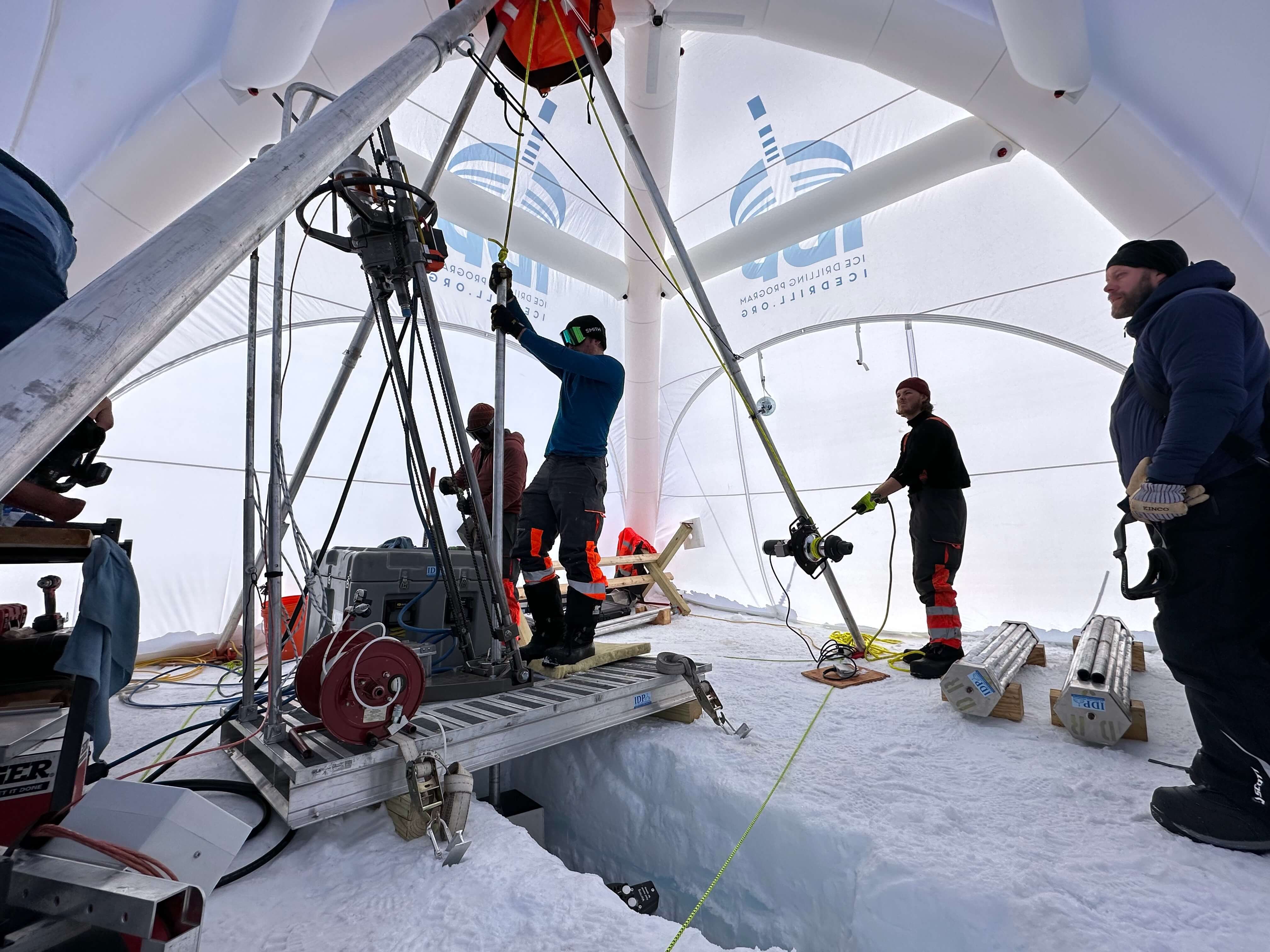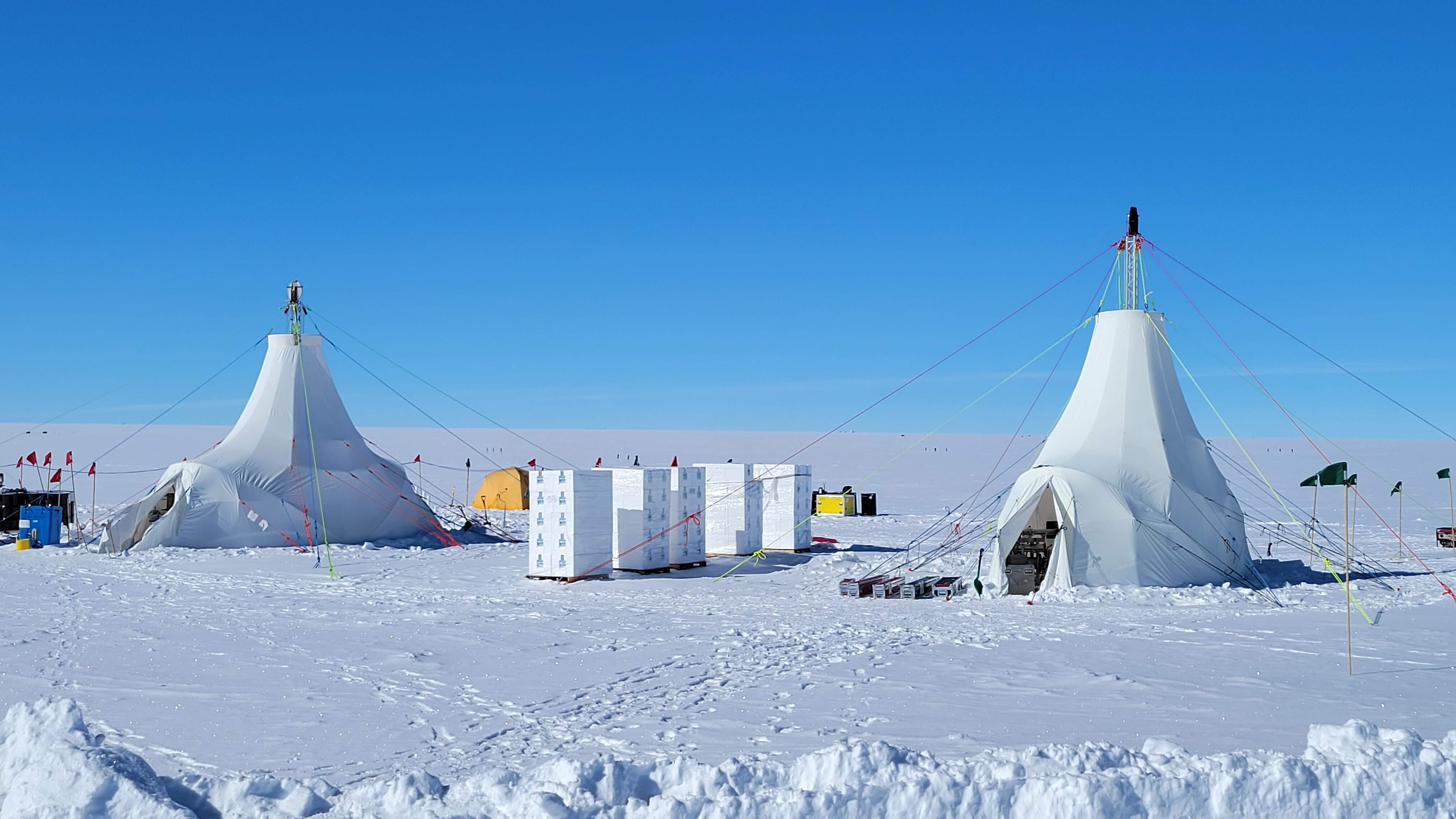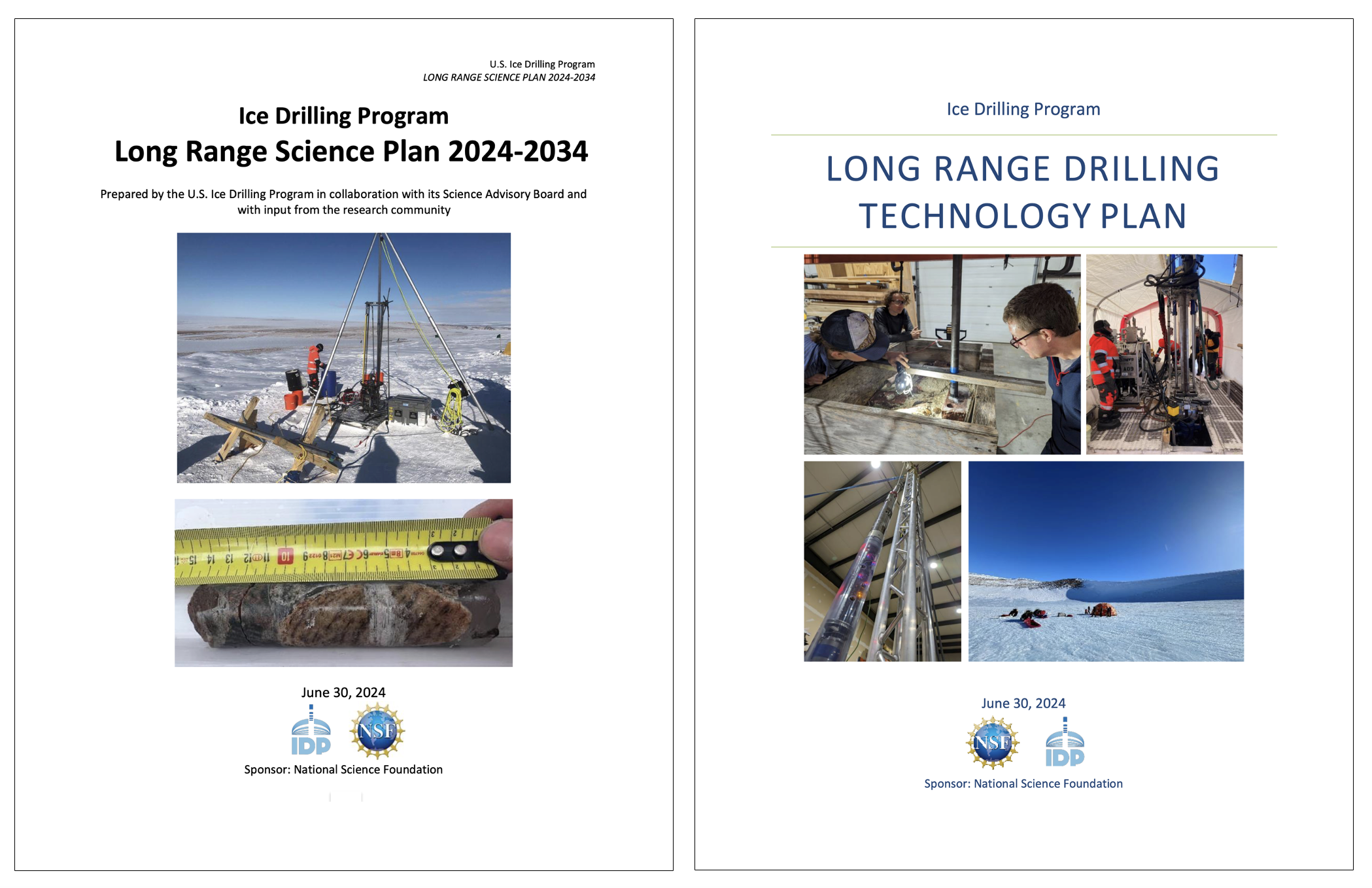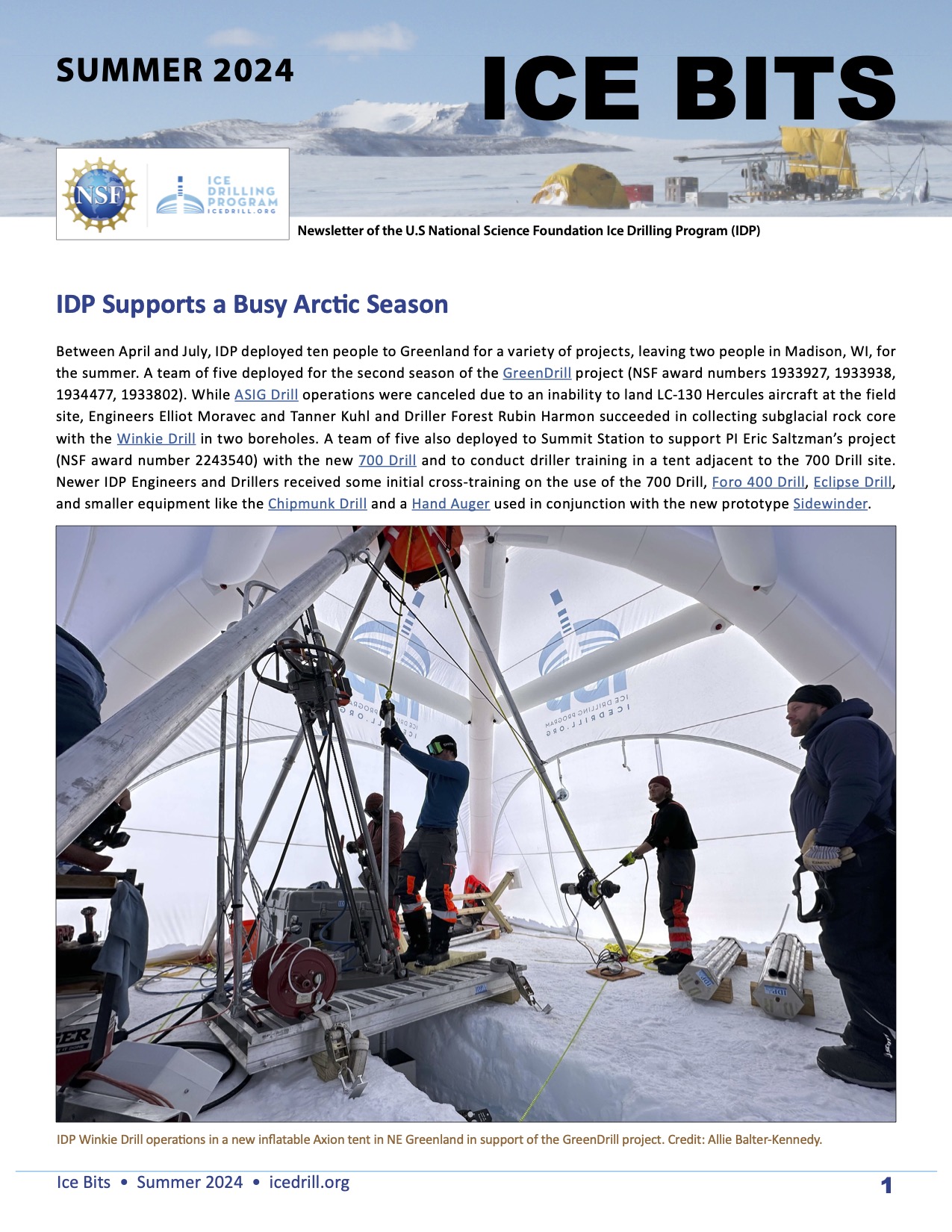IDP Supports a Busy Arctic Season
- Fieldwork
Between April and July, IDP deployed ten people to Greenland for a variety of projects, leaving two people in Madison, WI, for the summer. A team of five deployed for the second season of the GreenDrill project (NSF award numbers 1933927, 1933938, 1934477, 1933802). While ASIG Drill operations were canceled due to an inability to land LC-130 Hercules aircraft at the field site, Engineers Elliot Moravec and Tanner Kuhl and Driller Forest Rubin Harmon succeeded in collecting subglacial rock core with the Winkie Drill in two boreholes. A team of five also deployed to Summit Station to support PI Eric Saltzman’s project (NSF award number 2243540) with the new 700 Drill and to conduct driller training in a tent adjacent to the 700 Drill site. Newer IDP Engineers and Drillers received some initial cross-training on the use of the 700 Drill, Foro 400 Drill, Eclipse Drill, and smaller equipment like the Chipmunk Drill and a Hand Auger used in conjunction with the new prototype Sidewinder.
IDP is also supporting several PI-operated hand auger projects in Greenland and Alaska. PIs Joel Harper and Toby Meierbachtol (NSF award numbers 2113391 and 2113392) used an IDDO Hand Auger and Sidewinder at several locations in southwest Greenland to drill cores to 30 meters depth. PIs Kathy Licht and Trinity Hamilton (NSF award numbers 2039854 and 2039582) are using a SIPRE Hand Auger to sample the seasonal ice that forms in front of Greenland’s Isunnguata Sermia Glacier and Leverett Glacier. PI Christian Andresen (NSF award number 2239038) is using a SIPRE Hand Auger in Alaska in the set-up of eddy covariance flux towers that measure methane and carbon dioxide fluxes from tundra ponds, and meteorological information. And PI Bora Cetin (NSF award number 2220518) is using a SIPRE Hand Auger with a Makita battery-powered earth auger tool to collect permafrost cores from Nome, Alaska.
IDP Receives NSF Award to Continue Operations
- Long Range Plans
- Fieldwork
In August 2024, the U.S. Ice Drilling Program (IDP) received a National Science Foundation renewal grant for the coming five years (award number 2318480) to continue providing community leadership and to operate and maintain a facility to support ice drilling engineering, field support, and education and outreach. IDP’s mission is to conduct integrated planning for the ice drilling science and technology communities and to provide drilling technology and operational support that will enable the community to advance the frontiers of science.
If you are preparing an NSF proposal that includes any support from IDP, you must include a Letter of Support from IDP in the proposal. Researchers are asked to provide IDP with a detailed support request three weeks prior to the date the Letter of Support is required. Early submissions are strongly encouraged.
Scientists who seek to include IDP education and outreach activities associated with U.S. ice coring or drilling science projects should contact Louise Huffman at Louise.T.Huffman@Dartmouth.edu during their proposal preparation stage.
For additional information on requesting IDP support, visit our website at https://icedrill.org/requesting-field-support or contact us at IceDrill@Dartmouth.edu.
2024-2034 Long Range Science and Long Range Drilling Technology Plans Updated
- Long Range Plans
- Fieldwork
The U.S. Ice Drilling Program (IDP), in collaboration with its Science Advisory Board and with input from the research community, updated the Long Range Science Plan. This plan aims to articulate goals and make recommendations for the direction of U.S. ice coring and drilling science in a wide variety of areas of scientific inquiry and to make recommendations for the development of drilling technology, infrastructure, and logistical support needed to enable the science. A companion document, the Long Range Drilling Technology Plan, provides details about drills available through IDP. Both plans are revisited and revised as appropriate each spring. The Long Range Science Plan is available at https://icedrill.org/long-range-science-plan. The Long Range Drilling Technology Plan is available at https://icedrill.org/long-range-drilling-technology-plan.
If you envision the need for ice drilling for your project in the coming decade, please make sure that the high-level articulation of your science is captured in the Long Range Science Plan. If it isn’t, send several sentences to IceDrill@Dartmouth.edu describing the science driver and the envisioned field date and location for your project so that your plans are voiced in this planning document.
Portal to Ice Drilling Technology Documents
- Publications
The Library section of the IDP website serves as a portal to ice drilling technology documents and publications of interest to the ice drilling community and currently contains links to over 700 documents. The portal is organized by drilling topic (e.g., deep drilling, drilling fluids, hot water drilling, etc.), equipment type (e.g., 4-Inch Drill, Blue Ice Drill, etc.), U.S. Ice Drilling Program documents (e.g., equipment manuals, meeting/workshop presentations and notes, science requirements for equipment, etc.), and special collections (e.g., CRREL Reports, International Partnerships in Ice Core Sciences (IPICS), International Workshop/Symposium on Ice Drilling Technology series, etc.). Visit the IDP Library.
Acknowledgment of IDP in Publications
- Publications
If you receive any support from IDP, we kindly request that you acknowledge IDP in any resultant publications or articles with the following statement: “We thank the U.S. Ice Drilling Program for support activities through NSF Cooperative Agreement 2318480.” If you have any questions, please contact us at IceDrill@Dartmouth.edu.
A list of peer-reviewed publications from projects that received field support from IDP (or publications authored by IDP staff) is available at https://icedrill.org/publications.
IDP also maintains a library of technical ice drilling documents and publications at https://icedrill.org/library. See the article above for more information.




